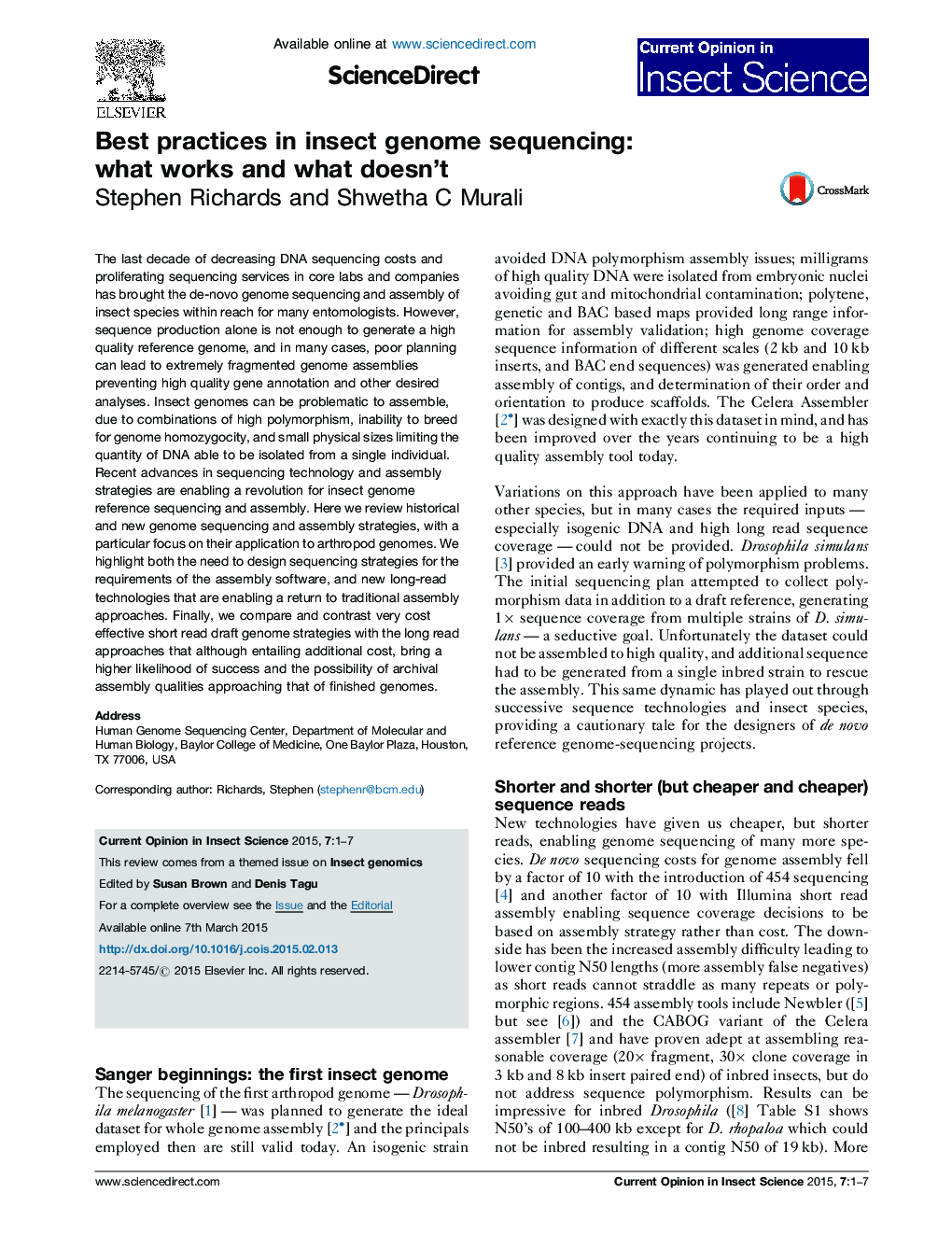| Article ID | Journal | Published Year | Pages | File Type |
|---|---|---|---|---|
| 4508296 | Current Opinion in Insect Science | 2015 | 7 Pages |
•Insect genome assembly is difficult, unreliable and often low quality.•Obstacles include DNA polymorphism, inability to inbreed and limited DNA quantities.•New short read assembly tools are more cost effective and higher quality than ever.•Assembly of long sequence reads is robust and can produce archival quality genomes.•New assembly validation tools are now cost effective at genome scale.
The last decade of decreasing DNA sequencing costs and proliferating sequencing services in core labs and companies has brought the de-novo genome sequencing and assembly of insect species within reach for many entomologists. However, sequence production alone is not enough to generate a high quality reference genome, and in many cases, poor planning can lead to extremely fragmented genome assemblies preventing high quality gene annotation and other desired analyses. Insect genomes can be problematic to assemble, due to combinations of high polymorphism, inability to breed for genome homozygocity, and small physical sizes limiting the quantity of DNA able to be isolated from a single individual. Recent advances in sequencing technology and assembly strategies are enabling a revolution for insect genome reference sequencing and assembly. Here we review historical and new genome sequencing and assembly strategies, with a particular focus on their application to arthropod genomes. We highlight both the need to design sequencing strategies for the requirements of the assembly software, and new long-read technologies that are enabling a return to traditional assembly approaches. Finally, we compare and contrast very cost effective short read draft genome strategies with the long read approaches that although entailing additional cost, bring a higher likelihood of success and the possibility of archival assembly qualities approaching that of finished genomes.
